Seed Cycling: A Simple and Effective Hack for Cycle Syncing
Discover how seed cycling can help women naturally balance hormones, support menstrual health, and improve well-being in 2025. Learn the phases, benefits, and how to get started!
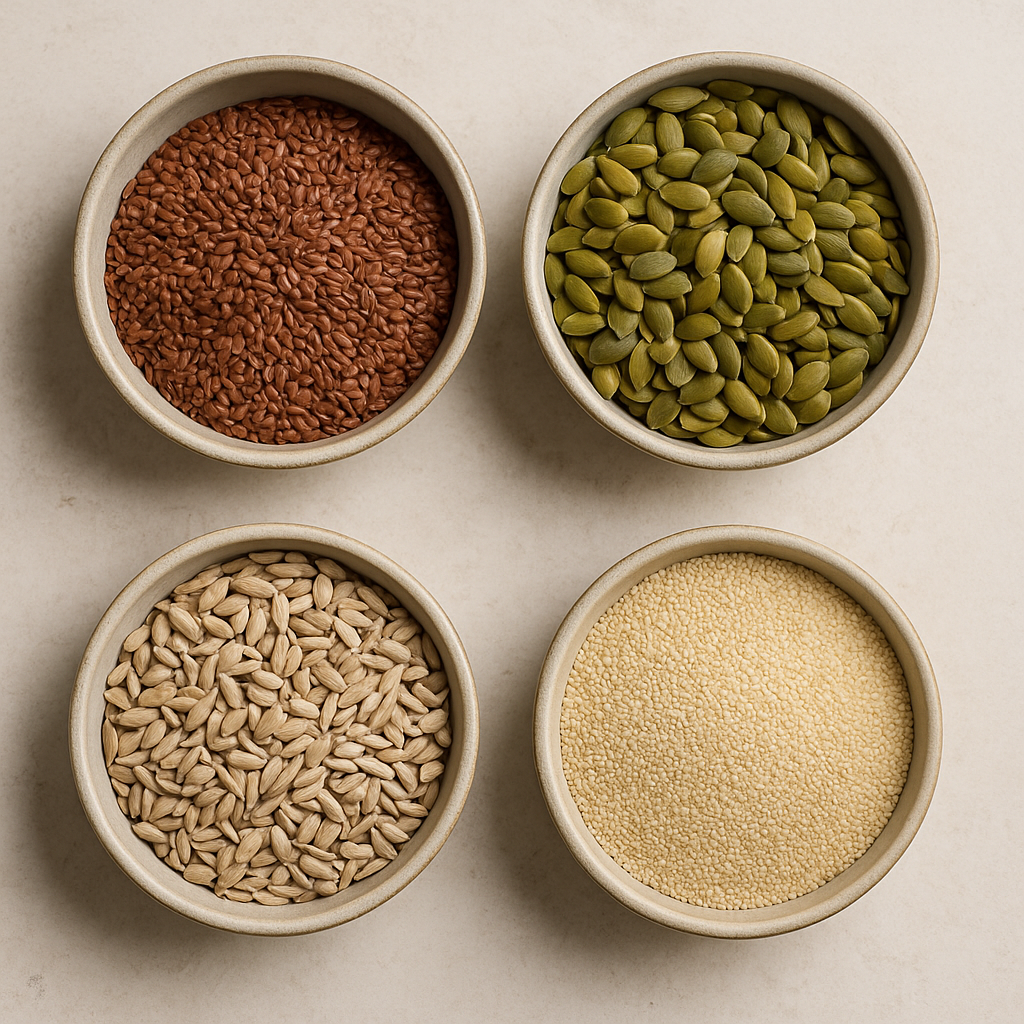
“Let food be thy medicine,” said Hippocrates — and when it comes to hormonal health, that couldn’t be more true!
If you’re tired of feeling out of sync with your body every month, seed cycling might be the natural remedy you’ve been searching for. This ancient practice is gaining popularity in modern wellness circles for one powerful reason: it works with your body’s natural rhythms.
In this guide, we’ll break down everything you need to know about seed cycling — what it is, how it works, and how you can use seeds like flax, pumpkin, sesame, and sunflower to support hormone balance, regulate your menstrual cycle, and feel more grounded in your feminine health journey. Whether you’re struggling with PMS, irregular cycles, or just want to reconnect with your body, this post is for you.
What Is Seed Cycling and How Does It Work?
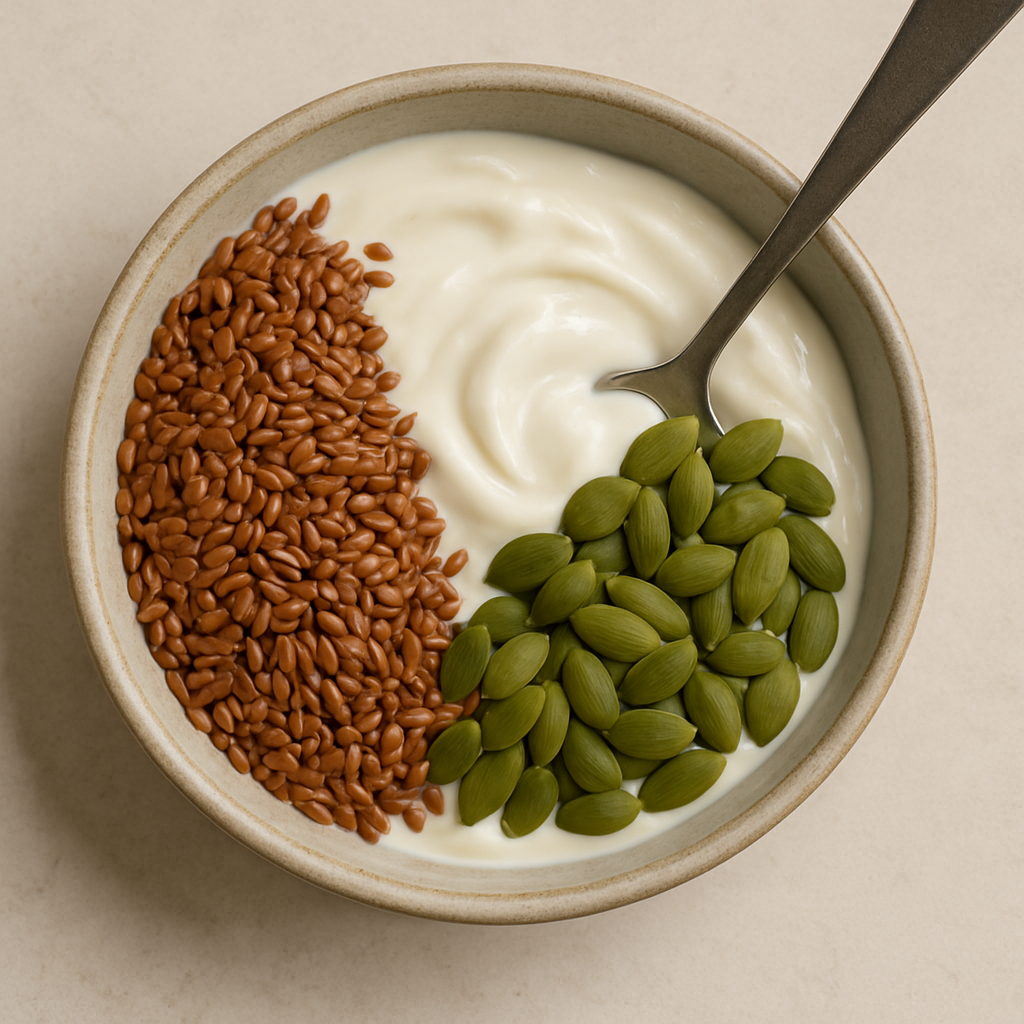
Seed cycling is a gentle, food-based approach to balancing female hormones by aligning specific nutrient-dense seeds with the phases of your menstrual cycle. Rooted in holistic health practices, it’s gaining mainstream popularity for one key reason — it’s natural, effective, and empowering.
The idea is simple: your menstrual cycle has two main phases — the follicular phase and the luteal phase — and by consuming particular seeds during each phase, you support your body’s natural production of estrogen and progesterone. These are the two main female sex hormones that govern everything from mood and energy levels to skin health, libido, and your ability to get pregnant.
During the follicular phase (which begins on the first day of your period and lasts until ovulation, typically Days 1–14), the body needs more support with estrogen production. This is where flax seeds and pumpkin seeds come in. They’re rich in lignans and zinc, which help support healthy estrogen metabolism and prep the body for ovulation.
Then, during the luteal phase (Days 15–28), after ovulation, your body shifts to producing progesterone. This is where sunflower seeds and sesame seeds shine. They’re high in selenium, vitamin E, and healthy fats — all of which help nurture progesterone levels and reduce PMS symptoms.
The beauty of seed cycling is that it’s non-invasive, customizable, and accessible. All you need is a small daily serving of seeds and a basic awareness of your menstrual rhythm.
The Seed Cycling Schedule: When and What to Eat
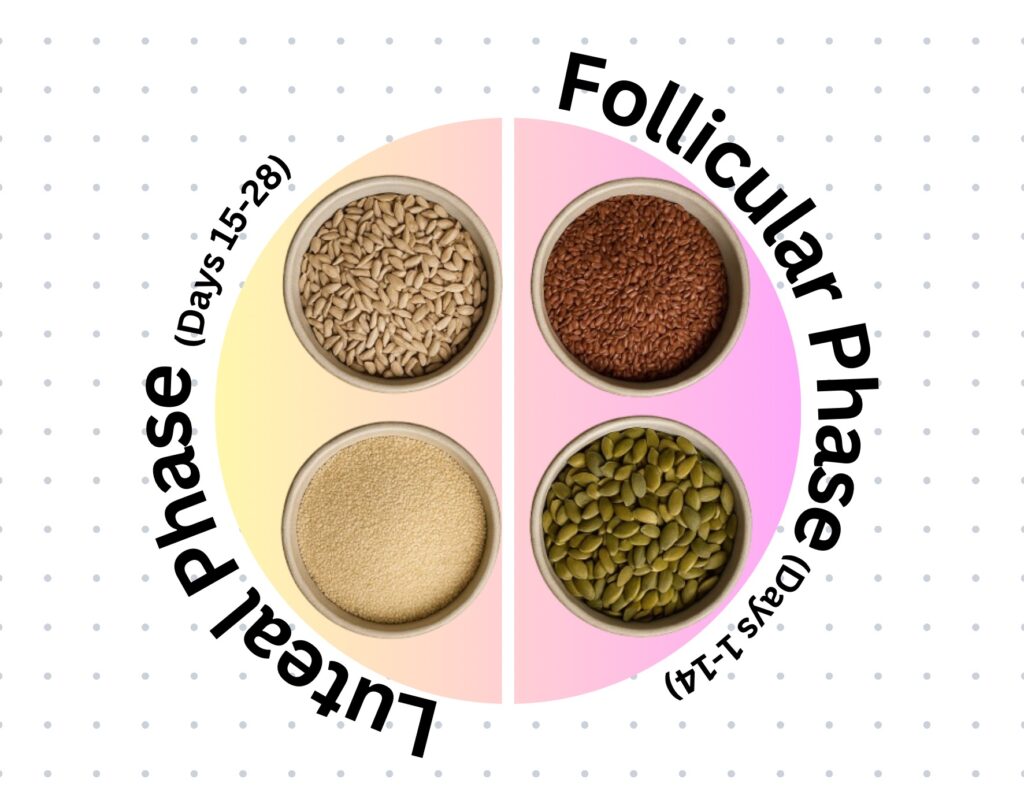
To practice seed cycling effectively, you’ll want to align your seed intake with the two main phases of your cycle. If you’re not sure where you are in your cycle, using a tracking app (like Clue or Flo) or observing your body’s signals (like cervical mucus or basal temperature) can help.
Follicular Phase (Days 1–14):
A review article published in the Pakistan Biomedical Journal indicates that:
- Eat 1 tablespoon each of flax seeds and pumpkin seeds daily
- These seeds help regulate and metabolize estrogen
- They also contain omega-3 fatty acids to reduce inflammation and support uterine lining development
- Flaxseeds are rich in lignans, which bind to excess estrogen and help flush it from the body
Luteal Phase (Days 15–28):
The same article published in the Pakistan Biomedical Journal also states that:
- Switch to 1 tablespoon each of sunflower seeds and sesame seeds daily
- These seeds are rich in selenium and vitamin E, supporting progesterone production
- They can also help reduce water retention, breast tenderness, and other common PMS symptoms
- Zinc in sesame seeds supports luteal phase hormone balance
Seed Cycling Tips:
- Always use raw, unsalted seeds for maximum nutrient retention
- You can grind the seeds for easier digestion and better absorption
- Add them to smoothies, yogurt, oatmeal, or sprinkle on salads
If your cycle isn’t exactly 28 days — that’s totally normal! Just follow your body’s cues or divide your cycle into two equal halves based on your average length.
Hormonal Benefits of Seed Cycling for Women
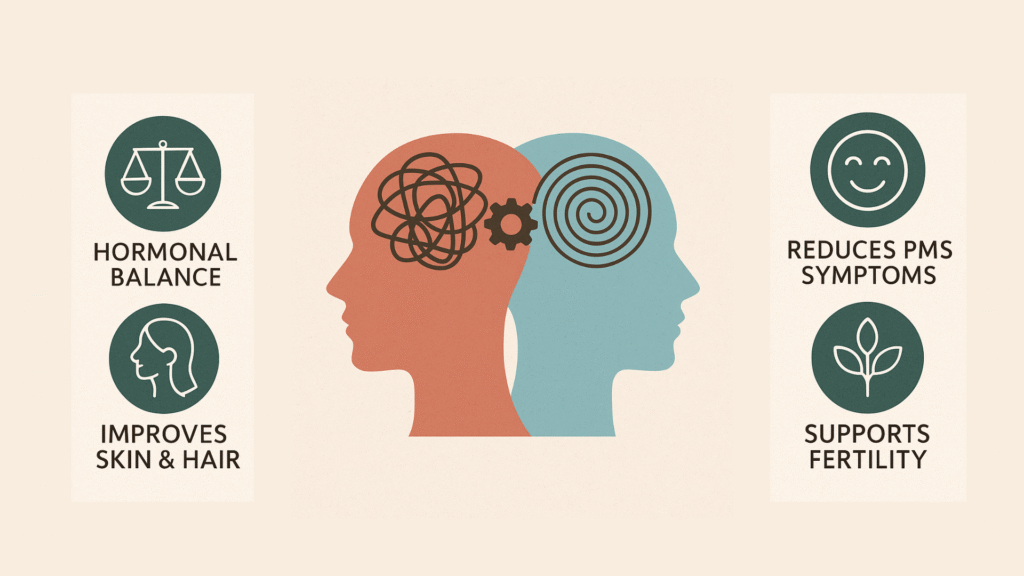
Hormonal imbalances are common — and they can show up in subtle but disruptive ways: mood swings, fatigue, acne, painful periods, or even fertility issues. Seed cycling offers a natural, non-hormonal way to bring your body back into harmony.
Here’s how seed cycling can help:
- Supports estrogen and progesterone balance:
- Prevents estrogen dominance, a key trigger of PMS, fibroids, and heavy periods
- Boosts progesterone in the luteal phase, promoting better sleep, mood stability, and reduced cramping
- Reduces common PMS symptoms:
- Eases bloating, breast tenderness, irritability, and fatigue
- Regulates menstrual cycles:
- Can help normalize cycle length and flow over time
- Improves skin and mood:
- Balanced hormones can mean clearer skin, less anxiety, and fewer energy crashes
- Supports fertility and ovulation:
- Hormonal harmony is essential for healthy ovulation and egg quality
Studies on individual seeds (like flax and sesame) have shown promising effects on hormone regulation, cholesterol, and even menopausal symptoms, making seed cycling a worthy addition to any woman’s wellness routine.
How to Incorporate Seeds Into Your Daily Routine
The key to seed cycling is consistency — and the easiest way to stay on track is to make the seeds part of meals you already love. You don’t have to overhaul your diet. Just integrate these tiny powerhouses into your daily rhythm.
Simple Ways to Eat Your Seeds:
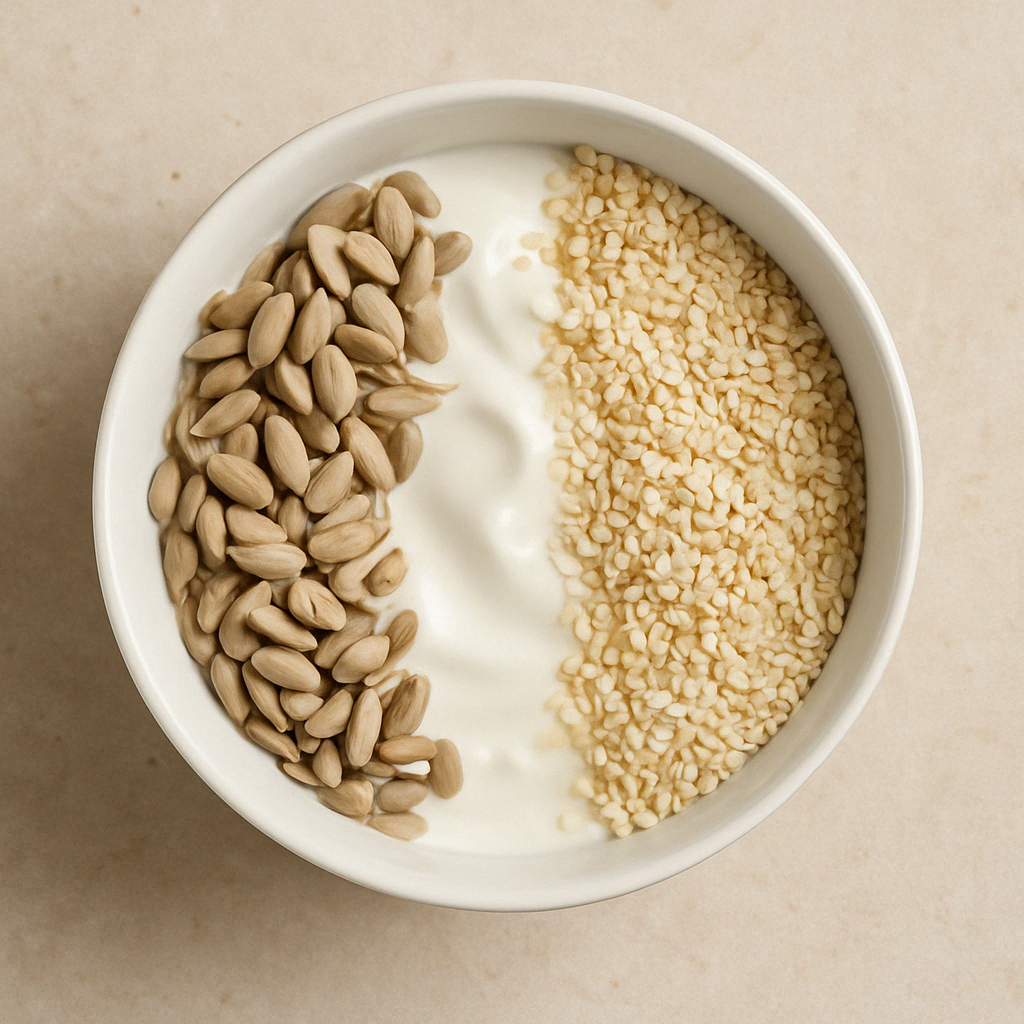
- Add ground seeds to your morning smoothie
- Sprinkle them on oatmeal, overnight oats, or chia pudding
- Mix them into energy balls or protein bars
- Stir into yogurt or plant-based parfaits
- Make homemade seed butter blends (like pumpkin-sesame spread)
- Toss them over salads, soups, or roasted veggies for crunch
Tips for Maximum Impact:
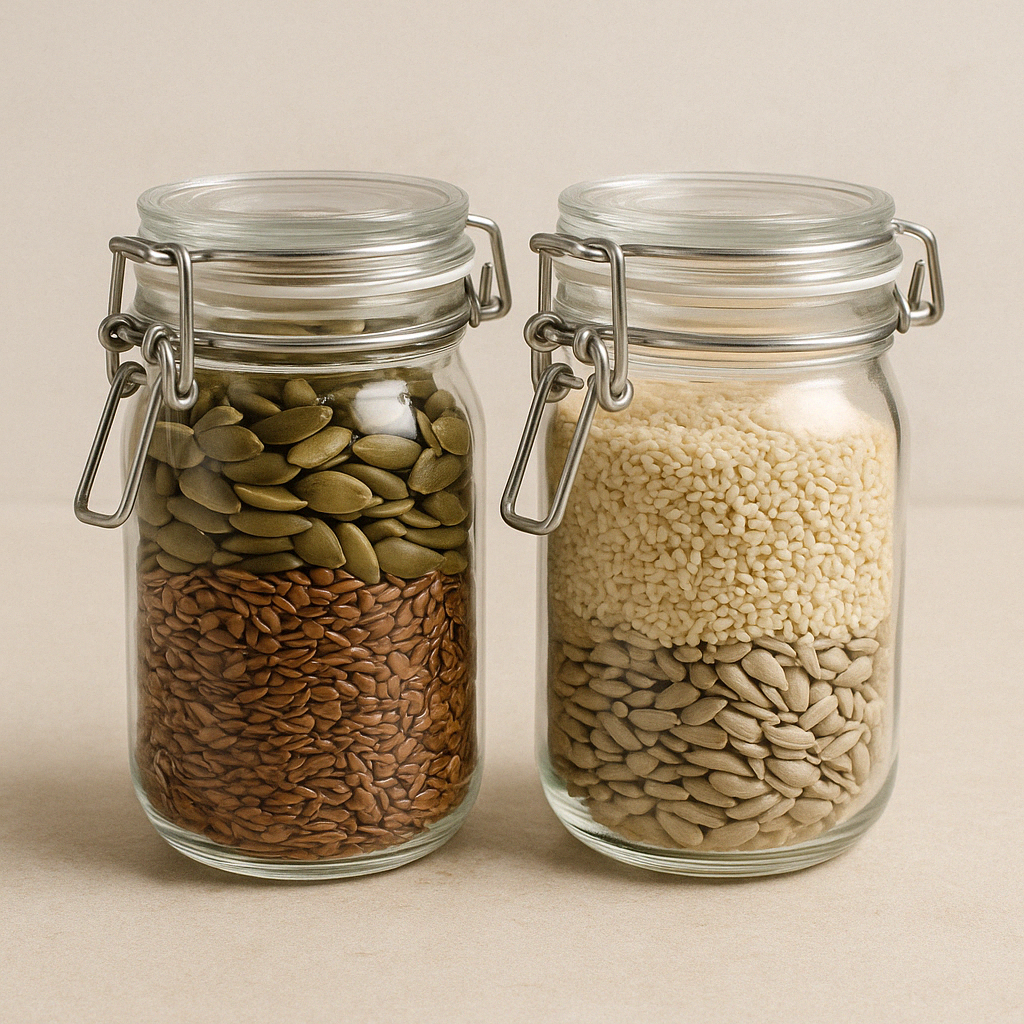
- Grind seeds fresh to enhance absorption of nutrients like zinc and lignans
- Store seeds in the fridge or freezer to keep oils from turning rancid
- Use a seed cycling jar system — two separate containers labeled “Follicular” and “Luteal”
- Prep your week in advance by portioning seeds into snack-size bags or mason jars
Whether you’re plant-based, gluten-free, or keto, these seeds are neutral enough to fit into any diet.
Seed Syncing and PCOS:
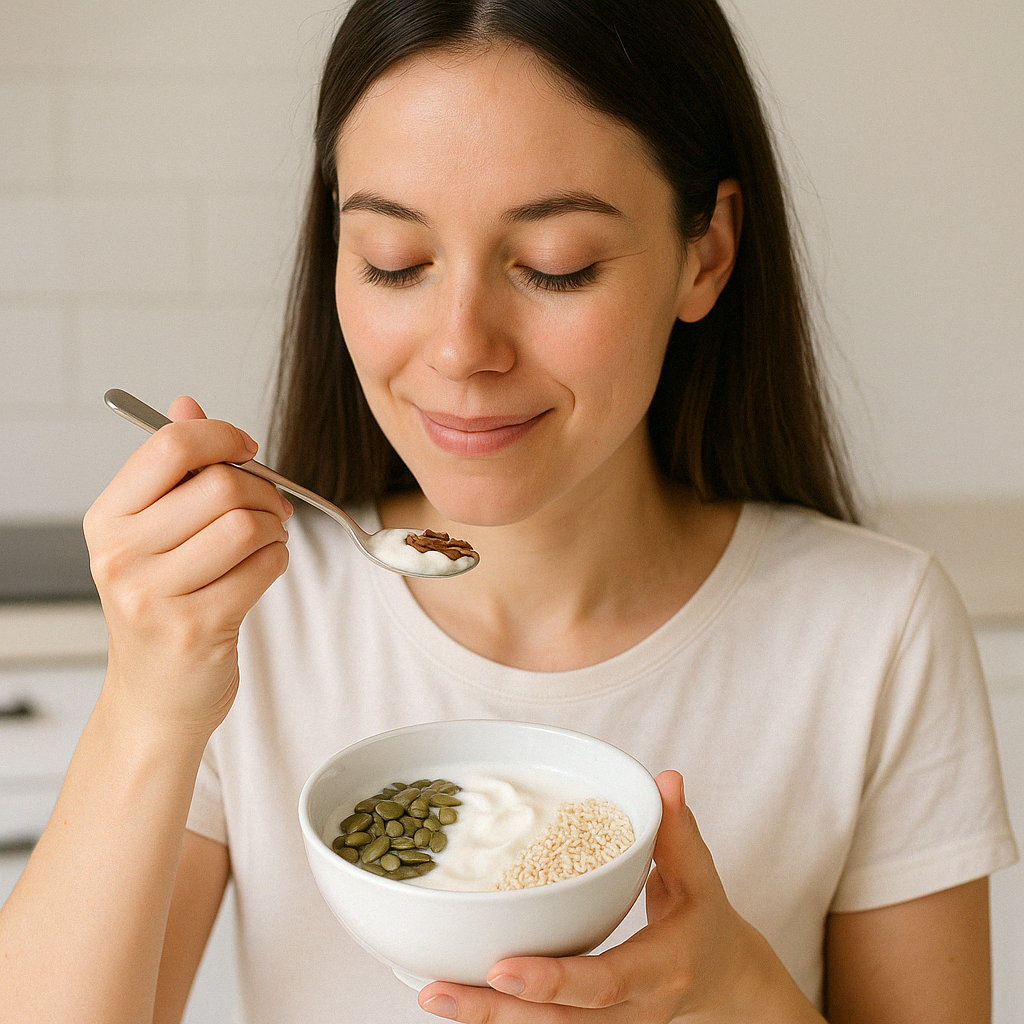
Emerging research suggests that seed cycling—a dietary approach involving the consumption of specific seeds during different phases of the menstrual cycle—may offer benefits for women with Polycystic Ovary Syndrome (PCOS).
In a study conducted by Ajith and Meera in 2024 involved 30 women aged 18–31 diagnosed with PCOS. Participants consumed 10 grams each of flax, pumpkin, sunflower, and sesame seeds daily for three months. The study reported improvements in menstrual regularity and hormonal balance, suggesting the potential of seed-based nutritional therapies in reducing ovarian dysfunction associated with PCOS .
Furthermore, a PCOS 2023 study with 60 women indicated that seed cycling could lead to weight loss, decreased FSH and LH levels, and complete cyst degeneration in 36% of participants, highlighting its potential as a natural intervention for managing PCOS symptoms .
While these findings are promising, it’s important to note that more extensive, peer-reviewed research is needed to fully establish the efficacy of seed cycling in PCOS management. Nonetheless, incorporating seed cycling into a holistic approach may offer a natural, food-based strategy to support hormonal balance in women with PCOS.
Conclusion:
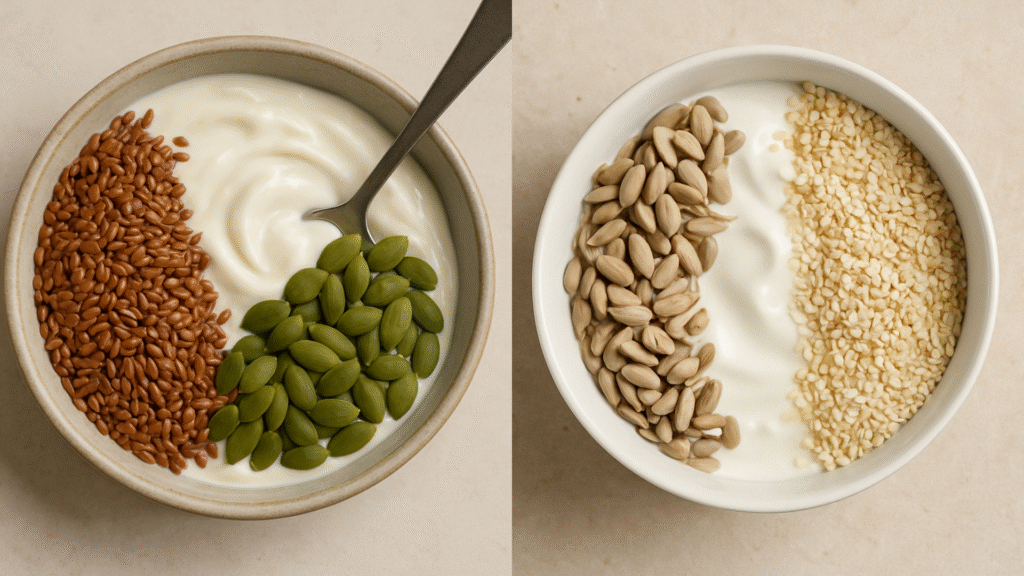
Seed cycling is more than a wellness trend — it’s a return to rhythm, a reconnection with your body, and a gentle way to support your hormonal health without synthetic hormones or crash diets. Whether you’re trying to balance your cycle, boost your fertility, or just feel more in tune with yourself, this simple practice could be the nourishing ritual your body needs.
Ready to get started? Grab some seeds, track your cycle, and tune in to your body. Your hormones — and your future self — will thank you.